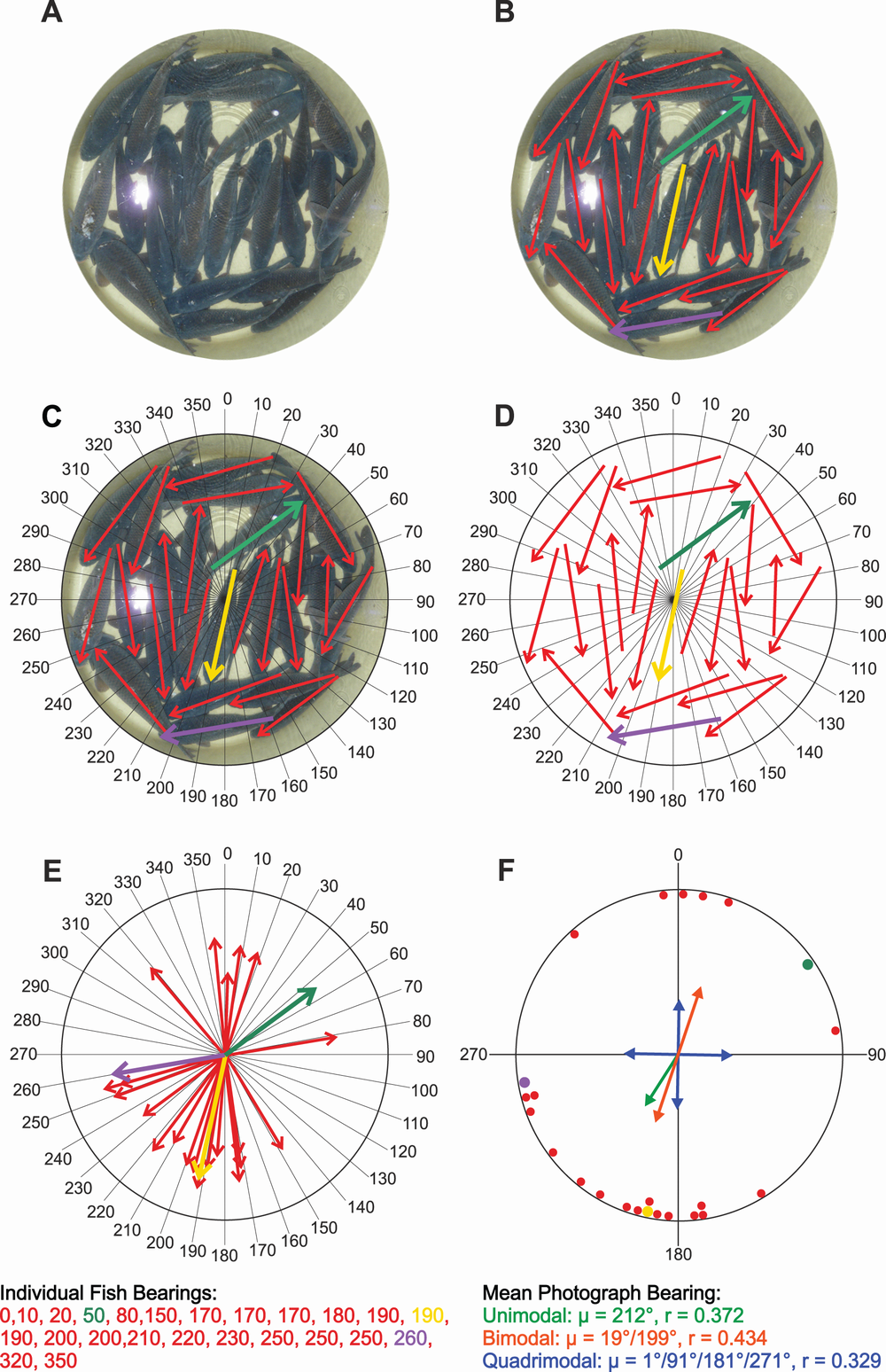Czech researchers have hypothesized that carp in large tubs at Christmas markets possess a capacity to sense geomagnetic fields.
We've all heard of the hypothesis that birds use magnetoreception. It's been studied for 40 years and remains a hypothesis due to some difficulties. Homing pigeons that are time-shifted, for example, can't find their way back, which would mean they don't use magnetic fields. Other studies claim correlational results but they are not really convincing unless you go in determined to be convinced. Like every major animal on earth, humans have the cryptochrome molecule so that's been a persistent target for the belief that humans have magnetoreception also, but outside magnetotactic bacteria evidence of magnetoreception has been inconclusive. Taking pictures to claim geomagnetism in bottom-feeding fish in Bohemia isn't going to convince anyone but it's fun to talk about.
The non-migratory fish with magnetoreception in this instance is Cyprinus carpio. The authors of the paper came to their conclusion by using a sample from 14,537 fish in 80 large plastic tubs at 25 markets in the Czech Republic on 817 occasions over seven subsequent days in December 2011, during their Christmas feast season.
Czechs eat carp during Christmas? Yes, and potato salad. Everything you heard about their food is true but the beer makes up for it. Carp were popularized by the Romans as food for the conquered masses, so it's no surprise it's still a tradition to those of European descent, but they're far less popular now in the US, where we now prefer bass or trout to goldfish. It could be worse, you could be visiting Finland and have to eat Lanttulaatikko at this time of year. Mmmmm, rutabagas.
As the researchers note in their paper, fish geomagnetism results have been inconsistent. And why would non-migratory fish have magnetoreception anyway? That is actually the easiest part to explain: Not everything in evolution has to make sense and plenty of traits get passed along that don't improve fitness. But if actual migratory fish don't have it, why would fish that dislike any current at all and therefore don't go anywhere have it? Doesn't matter, it's the weekend.
These carp are used to people, they are used to plastic buckets and they are used to light so the researchers do not believe those are factors in the alignment of the fish. The tubs have water tubes going into them and they found that the carp oriented themselves to the water flow so they eliminated those with active flowing water from the analysis. The tubs were in
different places so they don't believe wind, people or temperature were determining factors.
What did they find? Carp aligned themselves in the north-south direction 44% more than they aligned in the east-west direction. Unlike studies in birds, the researchers did not use magnetic fields substantially greater than the field of the earth so it isn't a physically biased experiment.

It's like shooting pictures of fish in a barrel. (A, B) Arrows were drawn along the median axes of all the fish visible in the photograph (the arrow axial course was marked unambiguously by the long dorsal fin, its direction by the head position). (C, D) The underlying photograph was removed and replaced by a compass rosette divided radially into 36 ten-degree segments. (E) Each arrow was moved to the center of the rosette and its azimuthal direction was determined by the nearest 10° mark. (F) Mean unimodal, bimodal and quadrimodal vectors were calculated for the photograph. Credit: doi:10.1371/journal.pone.0051100.g001
They conclude these Czech carp align themselves to geomagnetic cues. Before you say jste jsou blázni, keep in mind this is heuristics and there are obviously a lot of knobs to turn in figuring out magnetoreception. They are not (well, I hope) declaring the issue settled.
Citation: Hart V, Kušta T, Němec P, Bláhová V, Ježek M, et al. (2012) Magnetic Alignment in Carps: Evidence from the Czech Christmas Fish Market. PLoS ONE 7(12): e51100. doi:10.1371/journal.pone.0051100




Comments